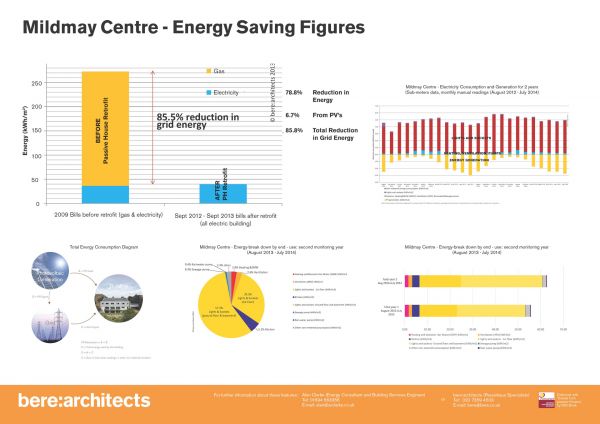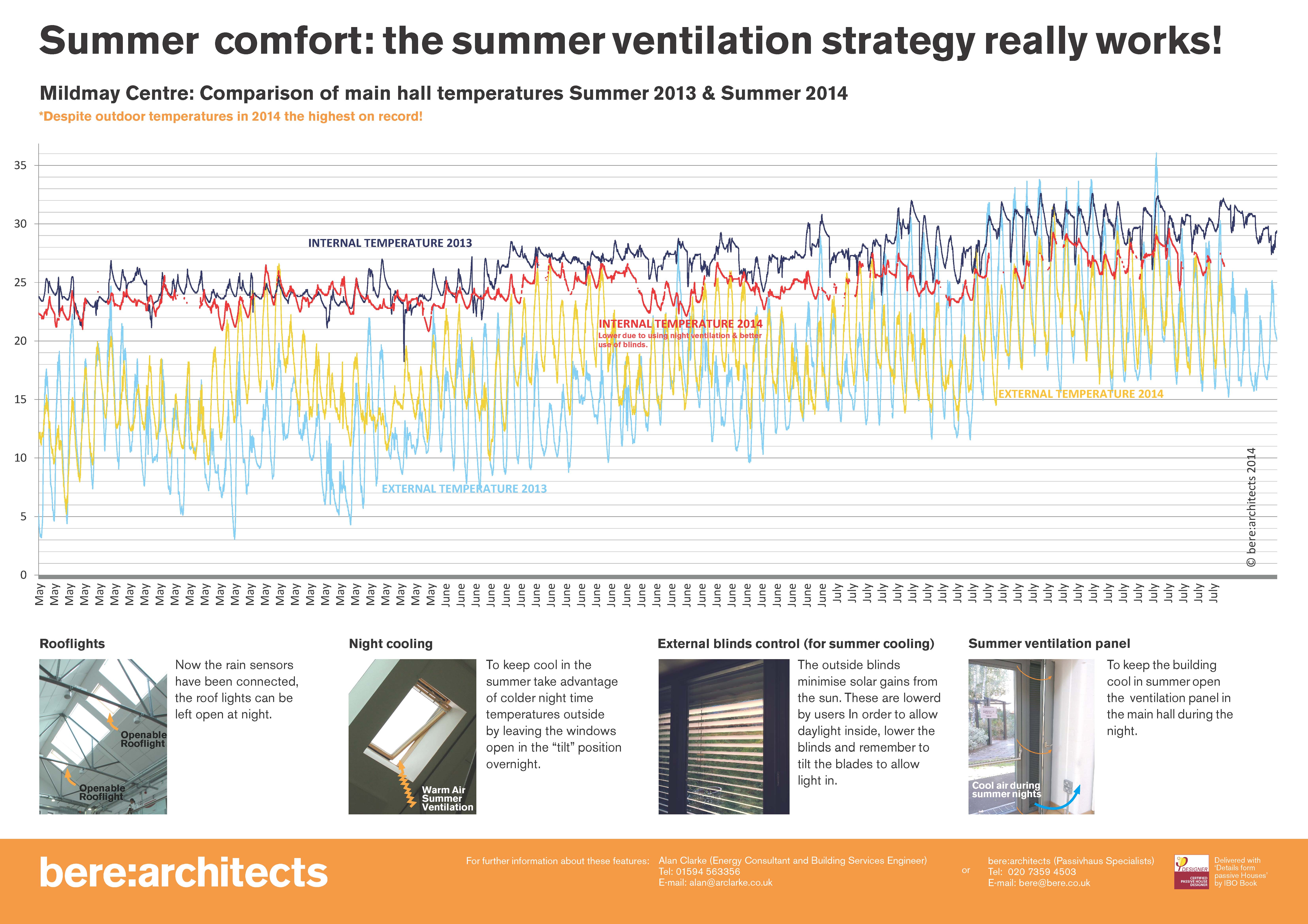This report is the result of over two years of 'Phase 2' in-depth monitoring of the performance of the upgraded 19th century solid-wall all-electric Passive House Mayville Community Centre (now renamed the Mildmay Centre) which was deep-retrofitted in 2011. It contains the full and detailed findings produced by the research team which looked at all aspects of the building, including comfort, performance and health.
The research project was made possible by funding from the Technology Strategy Board's Building Performance Evaluation (BPE) competition. The research was led by bere:architects who collaborated with the well-known and outspoken building assessor Roderic Bunn of BSRIA to act as an independent critic of the building, thus ensuring that the research work was rigorous. Rod Bunn is a building performance and ‘Soft Landings’ expert who speaks his mind and is unforgiving of mistakes. We chose him to collaborate with in order to give veracity to the findings.
The project methods and outputs were rigorously assessed at every stage by the Technology Strategy Board’s Project Evaluator, Tom Kordel, Senior Energy Consultant at XCO2 Energy Ltd, and Frank Ainscow, acting as the Technology Strategy Board’s Monitoring Officer.
The Technology Strategy Board (now Innovate UK) has commended the execution of this research project.
The appendices to the report have not been uploaded at this stage due to the confidentiality implications of publishing the appendices in an entirely open forum. However we will make this available to academics at our own discretion. The published main report contains an immense amount of detail that we hope will be of interest to academics, professionals, policy makers and members of the public who may be considering whether to commission a Passive House.
Headline results:
- A remarkable 85.5% overall energy saving was achieved after its Passive House retrofit (this includes all energy uses including unregulated loads such as computers & socket loads). The size of this saving in energy and similar saving in carbon emissions is all the more remarkable in the light of the heavily increased occupancy of the building post-retrofit, including several new servers and many new computers compared to pre-retrofit.
- The summer comfort conditions were found to be good once the automatic opening night-purge rooflights were made operable.
- The basement office space has no heating whatsoever, yet indoor temperatures in the space have never dropped below 19.75 degrees celcius, even on a cold Monday morning in Winter after a cold, unoccupied weekend. Other spaces hardly ever use the low temperature radiators dotted around the building.
- The retrofit will save the local community at least £1million in energy bills over the next 50 years - even in the unlikely event that energy costs don't rise at all in 50 years.
- Health and comfort conditions have been found to be excellent, and some initial summer overheating was solved once the rain sensors on the roof lights were fixed so that the passive night time ventilation of the building was workable to keep the building comfortable in the summer months as well as the winter months.


